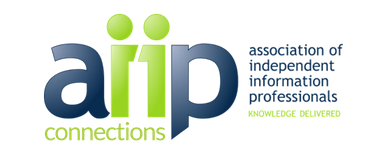How to Answer “So, what do you do?”

One of the most memorable traditions of AIIP’s annual conference is the chance for all attendees to stand up in the front of the room and introduce themselves and their business in 30 seconds. As I prepare my own virtual introduction for #AIIP21, I am asking myself several questions to ensure my introduction will be heard and remembered—that it will convey an effective message of my value. And yes, I ask myself the same questions whenever I anticipate being asked that dreaded question, “So, what do you do?”
What’s the point?
Whether someone asks me what I do for a living or I’m asked to provide a speaker’s bio, I always pause before answering. What is the one thing that I want the listener(s) to remember about me? Rather than rattle off a list of services I provide or all the jobs I’ve held since college, I look at the question behind their question—”So, Mary Ellen, what’s one thing you want me to know about you?”
Are the people I am talking with colleagues who are familiar with infopreneurs? If so, do I want to describe myself in a way that will help them remember me as a thought leader? As someone to whom they could refer a project? Do I want to find a point of commonality so we can brainstorm new approaches to a business challenge? Or are the people I’m talking with possible clients—familiar with their own field but perhaps not about the benefits an independent info pro can offer? If so, how can I be remembered because I address the kinds of problems my listeners experience?
What’s my hook?
Once I figure out who I’m talking with, I think about the one phrase that is likely to catch a listener’s attention. It needs to be short—something I can say in one breath—and memorable enough to stick. If I am talking with potential clients, it might be “I help executives make smarter strategic decisions” or “I bring fresh insights on your market.” If I am with fellow AIIP members, I might mention a recent pivot in my business and invite conversations about how others handled a similar pivot. In other words, I make it easy for someone to follow up on my introduction, in the context I’d like them to remember me. (See more of my thoughts on finding the introduction hook at The Anti-Elevator Pitch.)
Is it working?
I may have crafted the cleverest introduction ever, but it’s useless if my listener doesn’t hear and remember it. After I introduce myself, I take a deep breath and just… watch. Does the other person have a puzzled look on her face? If so, it is up to me to craft a different way of describing myself. If, on the other hand, the listener perks up and invites me to say more, I know I have found a good approach.
As infopreneurs, we know that a successful conversation with a client or prospect involves us listening 80% of the time. I make sure that, once I’ve given my brief and memorable intro, I stop talking and start listening for how the other person describes their concerns.
The most effective introductions often mirror the biggest pain points of our market, and listening to what happens after your introduction will give you the right words for the next intro.
Mary Ellen Bates has been an infopreneur since 1991, providing business analysis for strategic decision-makers and consulting services to the information industry. Her passion projects are beekeeping and coaching new and long-time infopreneurs. See more at BatesInfo.com.





